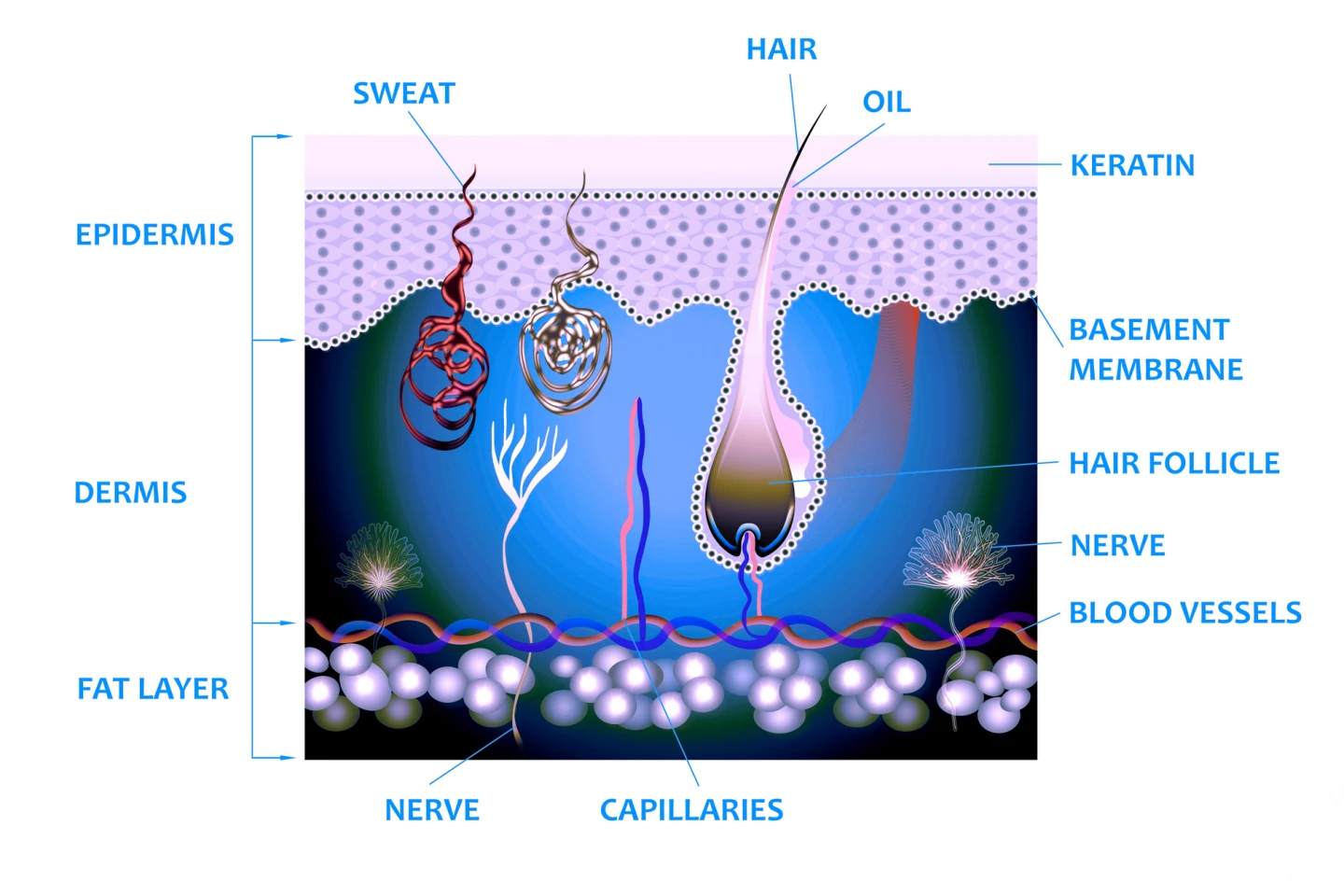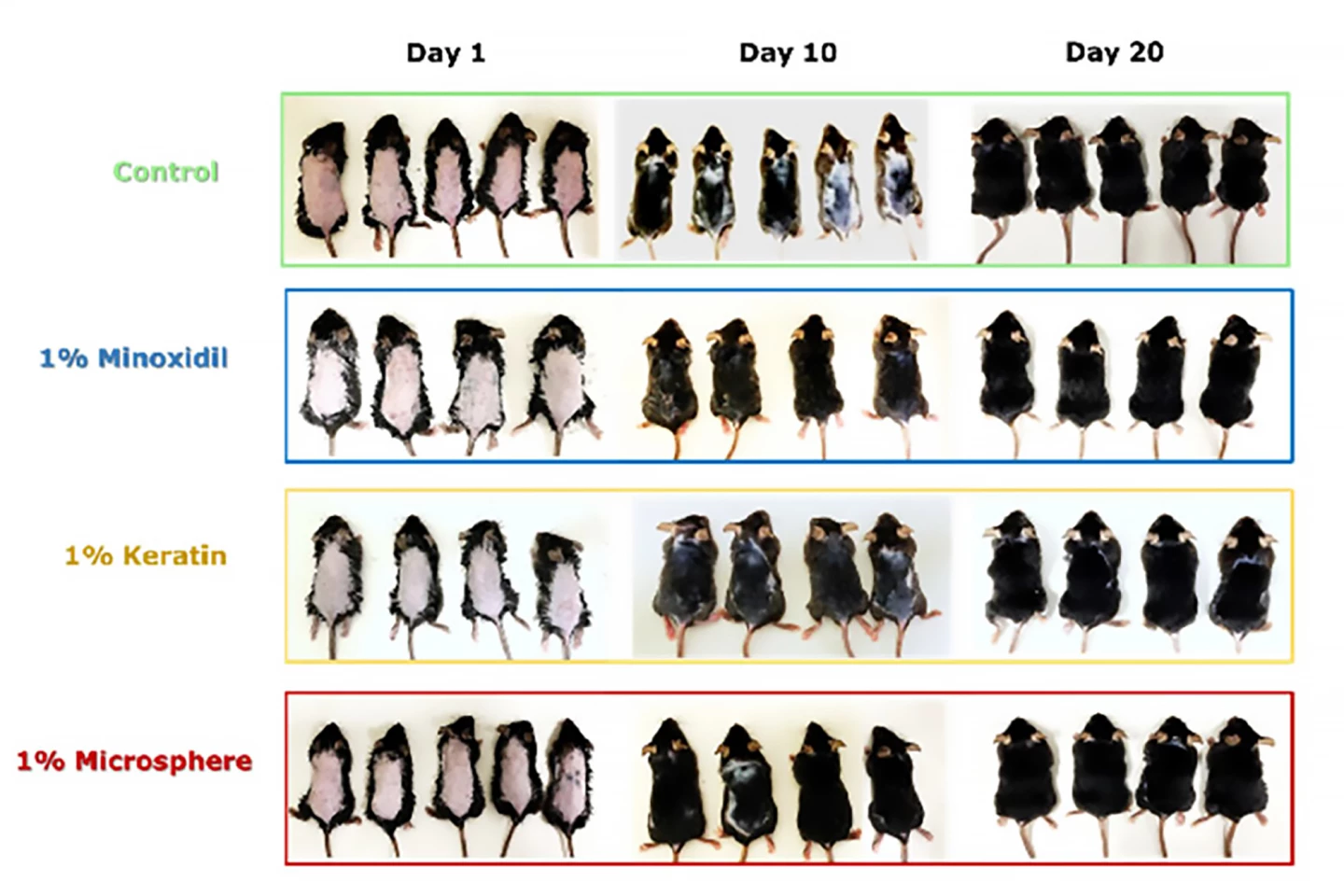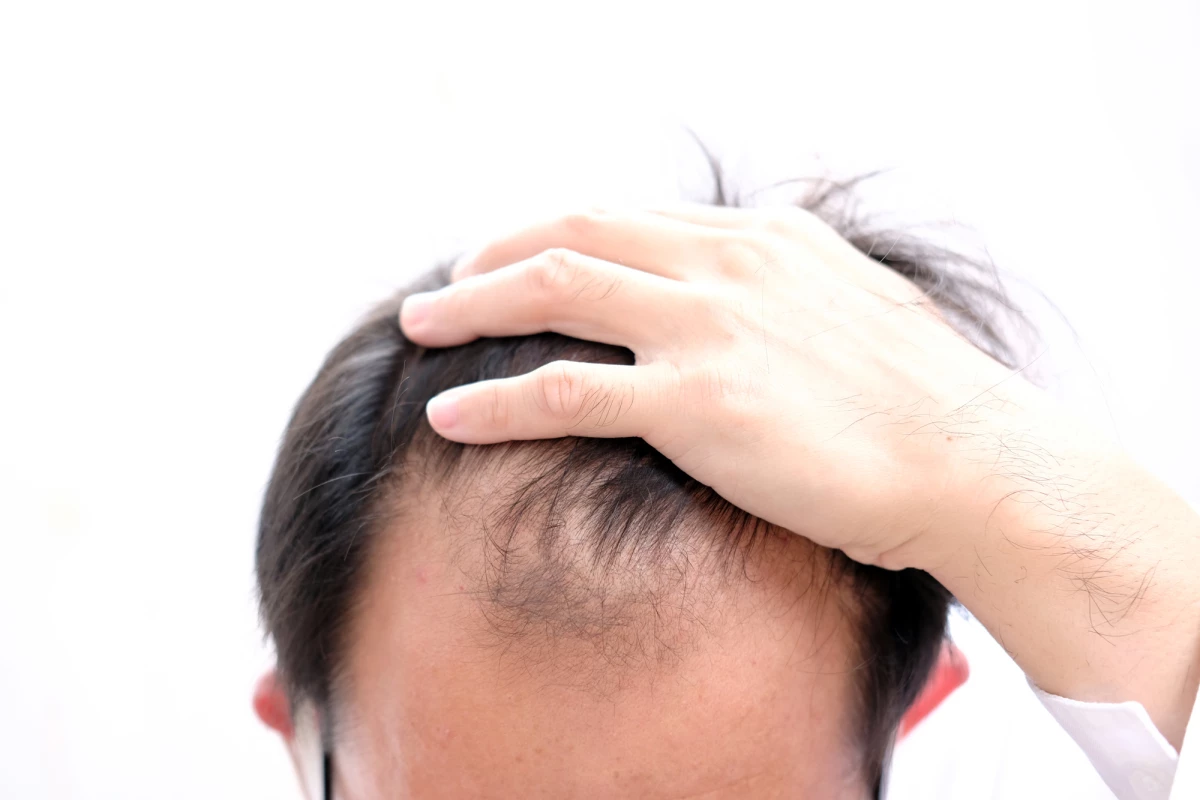A gel of tiny keratin spheres has been found to promote hair follicle growth. Given that our bodies naturally produce keratin, the research highlights the potential application of using keratin microspheres as a safe and effective hair-growth treatment.
Keratin is added to shampoos and conditioners to strengthen and improve the appearance of hair. We also produce the protein, which does the same thing – it keeps hair, skin, and nails healthy and strong. Given their biocompatibility, keratin-based nanoparticles have been explored as carriers for anti-cancer, antimicrobial and wound-healing drugs.
The skin’s top layer, or epidermis, is a barrier to penetration, which is both good and bad. While it’s a barrier against pathogens and chemicals, that barrier can stop therapeutic agents from entering. Hair follicles, however, present a potential pathway to enter the skin’s deeper layers. In a new study, researchers from the University of Tsukuba, Japan, created a gel made of tiny spheres of water-soluble keratin that penetrated the hair follicle to regrow hair in mice.

Microspheres, nanosized spherical particles derived from organic or inorganic sources, have shown potential to deliver therapeutics into the skin via the hair follicle. In the current study, the researchers synthesized 3D microspheres of water-soluble keratin. On contact with water, the microspheres swelled, forming gels.
Seven-week-old male mice had a section of back hair removed with depilatory cream. They were divided into groups treated with either minoxidil (a medication used to treat pattern hair loss), keratin, microsphere keratin, or water applied topically to the hairless area for 20 days. The mice were monitored daily, and photographs were taken on days zero, ten, and 20. The treated skin from all groups was collected to analyze its genetic expression.
In the keratin microsphere-treated group, hair regrowth commenced on the second day after treatment, with the growth rate subsequently accelerating. The effect was similar to that seen in minoxidil-treated mice. Hair regrowth was less pronounced in the keratin-treated group than in the keratin microsphere-treated group.
Analysis revealed that upregulated genes in the keratin microsphere group related to regulating functions mainly linked to the skin, including hair follicle development. The expression of genes involved in the stress response, tissue development and maintaining skin stability was also increased. Keratin microsphere treatment triggered stem cell-related genes, activating hair growth pathways and follicle development. It also significantly reduced the expression of pro-inflammatory markers compared to the control group. Considering these things together, the keratin microsphere treatment demonstrated anti-inflammatory activity while promoting the growth phase of the hair follicle.

The researchers then tested the microspheres on human hair follicle cells, dermal papilla cells, that regulate follicle growth. The microspheres were shown to be absorbed through the epidermis to reach the dermal papilla cells, activating them and their related hair growth markers. They were found to be non-toxic to the cells.
“We observed that microsphere treatment successfully penetrated the various layers of the epidermis to reach the dermal papilla and significantly activated markers associated with hair growth,” said the researchers. “These findings suggest that microsphere keratin stimulates the hair growth process and further enhances the interaction between the different layers of the skin.”
The researchers say their keratin microspheres have the potential to advance drug delivery methods, with applications in skin- and hair-related research and disorders. Further research will explore the specific ways microsphere keratin can be used as a targeted drug delivery and carrier system to treat follicle-related diseases.
The study was published in the journal ACS Applied Bio Materials.
Source: University of Tsukuba







